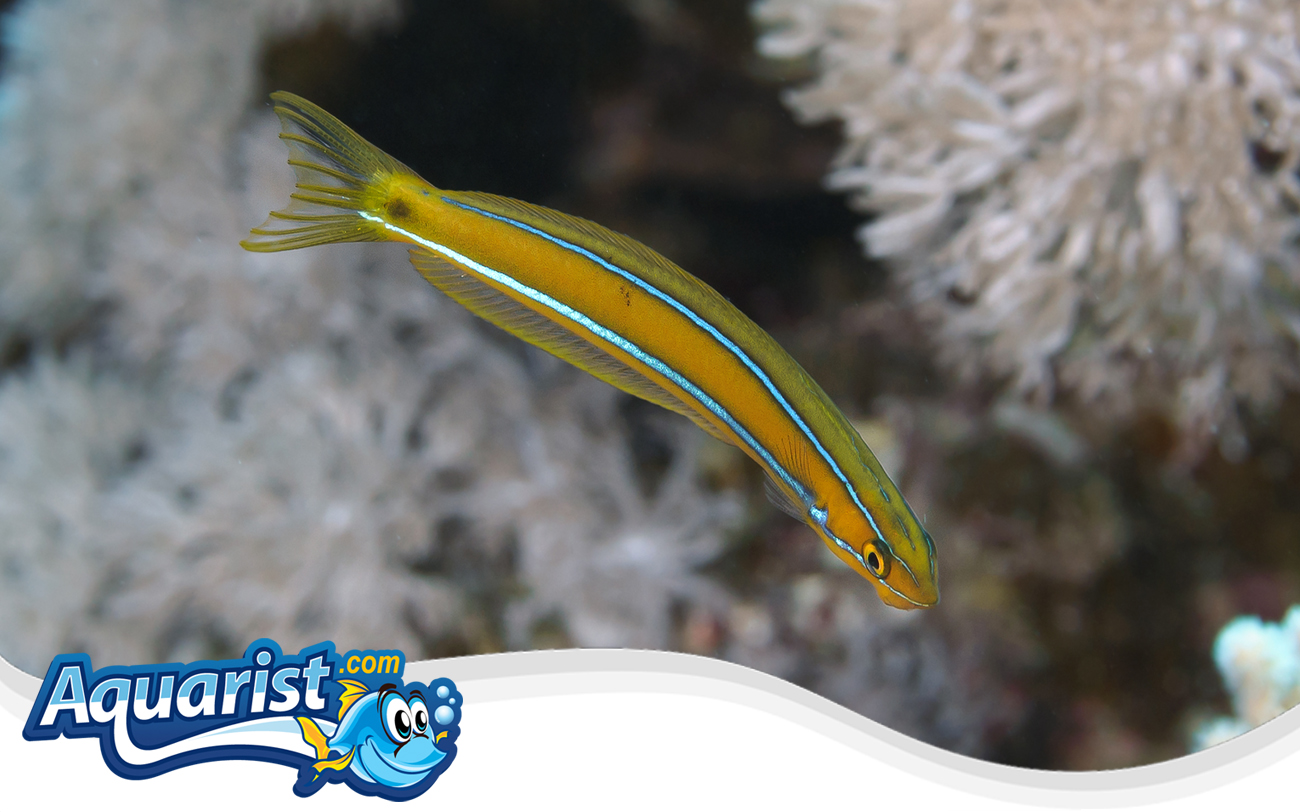Overview
- Native to the Indo-Pacific region, commonly found near coral reefs and lagoon habitats.
- Distinctive slender body with alternating bright blue and black horizontal stripes.
- Known for its unique behavior of mimicking cleaner wrasses to approach other fish and occasionally nip at scales or fins.
- Recommended for intermediate to advanced aquarists due to its specialized behaviors and dietary needs.
Feeding
- Carnivorous; naturally feeds on mucus, scales, and skin of other fish in the wild.
- Accepts frozen foods such as mysis shrimp, brine shrimp, small marine preparations, and finely chopped seafood.
- Multiple small feedings daily are ideal to maintain optimal health and coloration.
- Variety and consistency in diet essential for nutritional balance and health.
Habitat
- Prefers moderately sized aquariums (minimum 30 gallons) with ample hiding spaces and live rock structures.
- Stable, mature aquarium environment crucial for success.
- Provide numerous hiding spots, caves, and crevices to mimic their natural habitat.
- Moderate water circulation and effective filtration necessary for maintaining excellent water conditions.
Fish Care
- Optimal water temperature: 72-78°F (22-26°C).
- Recommended pH: 8.1-8.4; specific gravity: 1.020-1.025.
- Sensitive to water parameter fluctuations; regular monitoring and consistent aquarium maintenance important.
- Regular checks for signs of marine diseases and parasites; prompt action ensures optimal health.
Compatibility
- Semi-aggressive; suitable for aquariums with larger, robust fish species.
- Reef-safe with caution; may occasionally nip at other fish.
- Recommended tank mates include larger clownfish, tangs, dwarf angelfish, and other semi-aggressive marine species.
- Should be monitored closely for compatibility, particularly with peaceful or slow-moving tank mates.
Aquarium Behavior
- Highly active and curious swimmer, often exploring rockwork and open areas.
- May display aggressive mimicry behavior by approaching other fish to nip scales or mucus.
- Providing ample hiding spots and clear territories helps minimize aggressive interactions.
- Interactive with aquarium caretakers, often engaging actively during feeding sessions.


